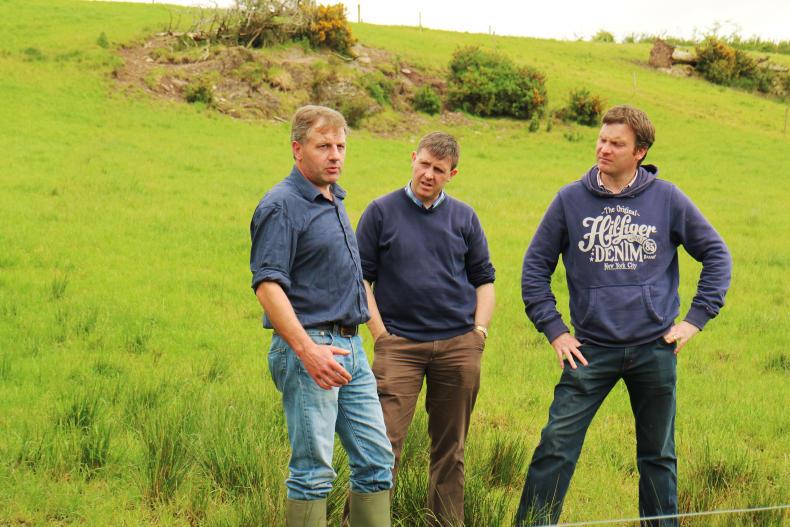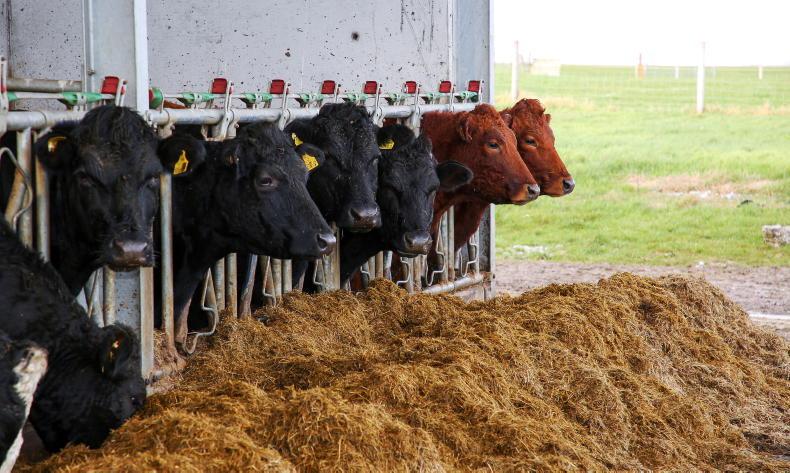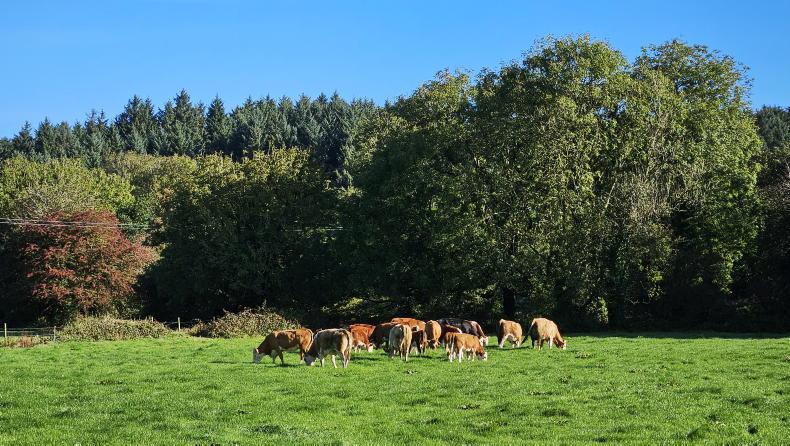Walk before you can run
Calf rearing is one of the most highly skilled production systems. Therefore it is essential that you walk before you run. All too often we meet farmers in January that intend to rear 15-20 calves. By February they have 60-70 calves purchased.
There are a number of reason for the over exuberance. Firstly they let their 15-20 young calves into the shed and think that it can hold twice as many - first mistake. Fresh air is the most critical thing you can give a calf – over stock a shed and you are asking for health problems.
Secondly, the majority of farmers that go into calf rearing come from a background of either buying store cattle or replacement heifers. For the same price they will get 8-10 calves, depending on the trade. It is a bit like the penny share mentality – the more you have the more money you will make – second mistake. Get your management wrong and the more calves you have the more money you stand to lose. While a batch of healthy calves has potential to make you money a batch of unhealthy calves are like a sponge when it comes to soaking up money.
Get your housing right at the start
If you are planning on rearing calves indoors then it is essential that you get your housing right from the start. Stocking rate is critical. Remember calves will go from 40kg at the start of the rearing period to 100-120kg, depending on what stage you intend to move them out of the rearing shed. Therefore they will almost treble in size. This is why buying too many calves at the start of the rearing period often results in major health problems further down the line. As a rough guide you want between 1.2-1.6m2 per calf.
It is also essential that sheds have good air movement, but free from drafts. Air should be moving over the top of the calves but not at ground level. To achieve this you my need to sheet down gates or place rubber flaps along the bottom of feed barriers or gates. It is good practice to try and limit the number of calves in the one air space. Therefore two small sheds are better than one big shed.
Keeping the level of moisture in the shed to a minimum is also key to minimising respiratory diseases and scour. On many of the large calf rearing units this is achieved by a raised passage way or by constructing a dome passage with a channel along the front of the pens to remove any seepage from the straw bed. Calves should not be reared in the same air space as older animals on the farm and should be reared well away from areas such as calving pens or sick pens.
Buy the right type of feeder
Do not purchase an un-segmented gang feeder. Calves should be fed individually for the first 2-3 weeks and should not be forced to compete for milk. For farmers rearing 15-20, a small 5-10 nipple gang feeder is adequate. They can simply be clicked onto the gate.. Automatic feeders are also available and work well, but are for the more specialised large scale rearer.
Install a system to heat water
Ideally you want to be feeding milk to young calves at 40 degrees Celsius for the first 14-21 days. Therefore you will need to install a system of heating water. Some exports state that feeding young calf warm milk will reduce incidents of scours during the early stages by up to 50%.
Always follow mixing instructions
You should always follow the manufacturer's guidelines when mixing milk powered and any changes should be made on a gradual basis. “Throwing in a little bit extra” can lead to nutritional scours. Make sure you don’t over heat the water. Milk powder should not be added to water over 40 degrees Celsius as this can damage the structure of high quality milk proteins. If you are boiling water cool it down before adding the milk powder.
Keep equipment clean
This is one area where farmers often fall down. Dirty equipment is a breeding ground for germs and diseases. Make sure to wash and rinse all equipment thoroughly after each feed. Using dirty equipment will only increase the risk of disease outbreaks. The pathogens that cause scour enter through the calf’s mouth.
Only buy calves from a trusted source
Don’t buy in problems. Only healthy calves should be purchased. No matter how cheap you think a calf is, don’t buy him if he has a dirty/wet hind quarter or if he is dull and showing early signs of pneumonia. Bringing these type of animals onto the farm will prove very costly in the long run.
It is vital that calves have received adequate colostrum in the first few hours of life (the guideline is around three litres within the first six hours). Buying a calf from a farm where it has not received adequate colostrum is like buying a ticking time bomb.
The Agri-Food and Bio Science Institute (AFBI) in Hillsborough produced data showing that the live weight gain recorded on calves with low ZST levels (an indication of the level of antibodies circulating in the blood) at seven days old was 17% less in the period up to three months than calves with high ZST levels. T
These calves also required a greater number of antibiotic treatments and over their lifetime. In completing the trial AFBI purchased a total of 240 calves from farms around the country. The ZST tests showed that on average 15% of the 240 calves had inadequate immune status. On an individual farm basis the range was from zero to 57%. This highlights the importance of knowing where you are sourcing calves from.
Management of the calf after purchase
When the calves come onto the farm, stress levels need to be kept to a minimum. Therefore don’t be tempted to dis-bud. Initially group the calves into batches of 4-5 as this will allow for closer observation. You need to watch out for calves that are not used to the feeding system you are using.
Some calves may have been trained to drink out of a trough/bucket or my have been reared on the cow. Whatever system you are using to feed calves, it will take 2-3 days for the entire group to get trained in on it. Ideally, if you are only buying 15-20 calves you should try and buy them as a group over the period of a week. This will make management a lot easier, especially if you intend grazing them over the summer. A small group of calves with a big spread in the age profile will only increase labour.
Buy early in the season
I always advise farmers to try and buy calves early in the spring. There are two reasons for this. Firstly the level of disease on the dairy farm at the start of the calving season tends to be at its lowest. Therefore you will stand a better chance of buying a healthier calf in Jan/Feb than in March/April. Secondly your Jan/Feb born calf will be at least 40-50kg heavier when housed in the autumn. If slaughtering as a young bull at 14-15 months the additional 50kg of liveweight achieved pre housing will reduce the cost of the final finishing period significantly.
How many times to feed?
There are a number of theories on how many times per day calves should be offered milk. Research has shown no long-term difference in the performance of calves fed once per day and those fed twice per day. From a management point of view, we would advise the novice calf rearer to feed twice per day for at least the first 14-21 days after purchase. Depending on labour availability you can then decide to move to once per day feeding. However, even on once per day feeding you still need to monitor calves regularly during the day to ensure you pick up any health issues at and early stage.
Don’t skimp on straw
It is essential that you do not skimp on bedding, especially during the first few weeks of the rearing programme. The bed must be kept clean and dry at all times with fresh straw applied daily. A benefit of applying fresh straw daily is that the calves will begin to pick at the straw. This will further aid rumen development.
Try and get out to grass quickly
Many dairy farmers have perfected the art of rearing their heifers calves outdoors. Getting calves outdoors is a win-win situation in that it reduces costs and reduces incidents of scours and respiratory diseases. It does however require a high level of skill and it is essential that you monitor calves regularly throughout the day to identify any sick calves quickly. Farms with access to sheltered paddocks then plan should look at the option of outdoor rearing. Milk can then be fed using one of the mobile feeders with meals and straw fed though a creep feeder.
Make sure calves always have access to fresh water
Many farmers believe that just because calves are being fed milk they don’t require water. This is not true. The objective of any successful calf rearing system is to develop the rumen so that you can move calves away from expensive milk onto meals. Research work has shown meal intakes to be increased when calves are offered a continuous supply of fresh water during the first 30-40 days of the rearing programme.
Feed straw not hay
The reason for feeding straw as opposed to hay is that when fed along with concentrates and milk it leads to better rumen development and prevents calves from going “pop bellied”. If feeding hay, you should limit access as opposed to feeding ad-lib.
Feed the correct ration
Meals should be offered to calves from when they arrive on the farm. The ration should be palatable with a protein content of 18%. It is also essential that you have adequate trough space to encourage calves to start eating. As a rough guide each calf should be allocated 300mm of trough space and the trough should be raised off the ground. Your target is to have calves consuming 1.2-1.5kg of meal per head per day prior to weaning. Live-weight at weaning should be in the region of 80-90kg. Continental calves may be up to 100kg. When bucket feeding calves you can abrupt wean when meal consumption targets are reached.













SHARING OPTIONS